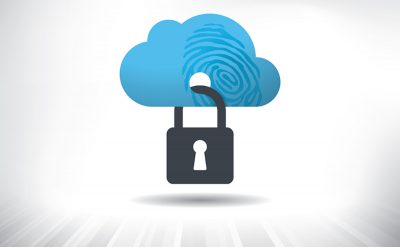We live on a planet full of dangerous activities. Cyberattacks such as phishing threats, malware, and ransomware put your mission-critical data and devices at risk. So do disasters, whether they are natural or human-caused.
Data that is not backed or protected or recovered is in danger and is a severe problem faced by all size businesses.
Investing directly for the alleviation of potential disasters will save your organization and network in the long run. In the world of reliable hosting, for instance, each infrastructure deployment comprises all kinds of high availability (HA) and disaster recovery (DR) solutions.
Investing in DR and HA solutions will assist in business continuity, avert a lot of stress, and protect you from the possibly destructive recovery price.
What is disaster recovery (DR)?
Disaster recovery is the best cloud solution that recovers business data from the worst outages you can ever imagine.
Between natural calamities, equipment failure, cyberattacks, and human error, it’s almost confirmed that you will encounter a disaster in your business life one day. According to the report published by a 2020 Verizon data breach investigation report, about 34% of data breaches involved internal actors.
To better understand, take a sneak peek of these eye-opening and frightening facts:
- According to the Nationwide Insurance Survey, over 50% of small business owners surveyed said it would take approximately three or more months to recover from a hit of disaster.
- As per the Federal Emergency Management Agency (FEMA), about 40% to 60% of small businesses never reopen due to disaster.
- According to the Nationwide Insurance Survey, about 75% of small businesses do not have a disaster plan.
What is Data Recovery as a Service (DRaaS)?
It is a cloud-based service model offered by third-party service providers. It allows businesses to overcome disasters such as human-inflicted activities or natural calamities. In short, it is a process of keeping the company running even if a disaster hits your local premises.
Thanks to the cloud for introducing Disaster Recovery as a Service (DRaaS) to the whole world. The best DRaaS providers keep businesses data secure and give access to data even in the aftermath of a disaster. So, there is no need to maintain storage infrastructure.
Are you investing in DRaaS?
These are four factors businesses should consider before investing:
1. Location
A DRaaS solution enables organizations to store their most crucial information offsite in a cloud suitable for their business needs. For instance, Florida’s Department of Agriculture did precisely the same thing by getting a DRaaS partner DSM to support its disaster recovery initiatives. At present, their data is stored offsite in a new location away from their headquarter in Tallahassee.
Craig Vollertsen, Chief Technology Officer, Florida Department of Agriculture and Consumer Services, said, “DSM has put Agriculture in a much better position from a disaster recovery standpoint than we have ever been in historically.”
2. Support and understanding
It is one of the essential factors necessary for your provider to understand your business processes and needs, thus remediating any issues that might hinder alignment with their architecture. Sometimes, providers set you up at the start and then leave you on your own, so it’s necessary to consider support.
Once the setup is done for large enterprises, they can look after themselves with full-time IT staff. Simultaneously, smaller enterprises will prefer full-time provider support that offers advice and technical support as needed.
3. Compliance
When considering DRaaS providers and cloud backup, make sure they meet your organization’s compliance requirements. Following are the three most important compliance requirements:
- Statement on Standard for Attestation Engagements 16 Type II (SSAE Type II) is an approval stamp from certified auditors. The stamp states that an organization has met proper controls over financial reporting (SOC 1) and effectively controls over a given period (SOC 2).
- Criminal Justice Information Services (CJIS) is a program commenced by the state bureaus and FBI. It identifies the precautions that should be taken to fingerprint records, criminal background, and other data collected by law enforcement agencies.
- Health Insurance Portability and Accountability Act (HIPAA), this act is essential for healthcare organizations. This act is responsible for protecting sensitive patient information.
4. Recovery speed
How fast can your providers get you back in the race (business)? This is analyzed by the following:
- Recovery Point Objective (RPO) is the time taken by the provider to restore business function to avoid business continuity breaks or avoid negative consequences, i.e., exactly how much data damage can you handle. With more healing goals, you have more choices – especially against ransomware.
- Recovery Time Objective (RTO) is the maximum time required for full restoration and recovery to be accomplished at a secondary site when your business is back up-and-running.
For this, you have to hunt for a DRaaS provider with aggressive healing speeds and one that supports a Continuous Data Protection (CDP) prototype vs. periodic backup.
A CDP plays a vital role in backing up the most recent data because it replicates data every time a transaction or change is made.
The takeaways
When conducting business continuity planning, organizations must have their own disaster recovery approach as every business is different.
The critical challenge for the organization will be balancing tools and methods available. However, the aim should be precise for everyone – invest upfront to prevent higher recovery costs in case of a disaster.
We all know that disaster is a sudden thing, and we don’t have time to prepare for it so, it’s always better to be prepared in advance. Learning which disaster recovery solutions perfectly suit you will help you to save your time and cost. Ultimately, it will save your business. Therefore, it is the right choice for businesses to invest in DRaaS.
For more such out of the box content, download our latest whitepapers on cloud and cloud solutions.













![[Things to Know] Before Selecting Cloud Solutions](https://d2qt3hjxf3fk7j.cloudfront.net/wp-content/uploads/2020/02/13083906/Cloud-Solution-400x247.jpg)